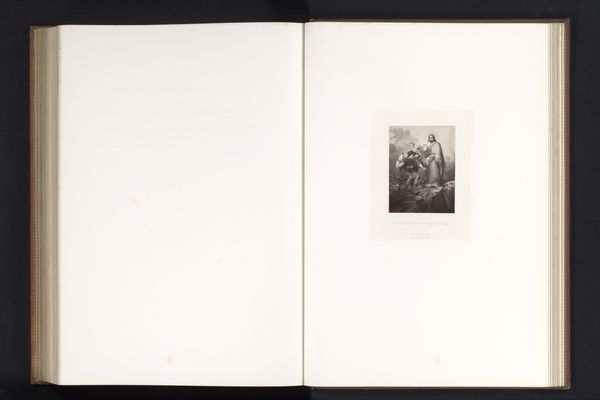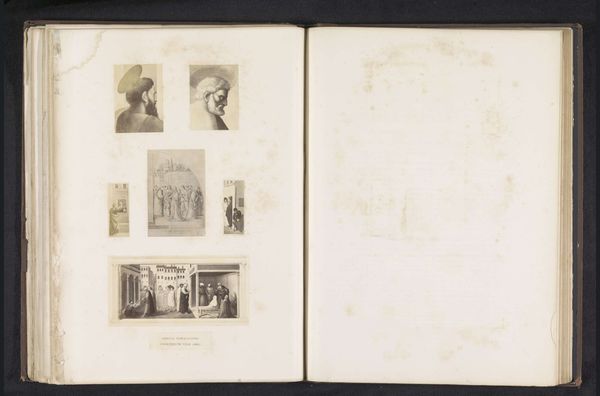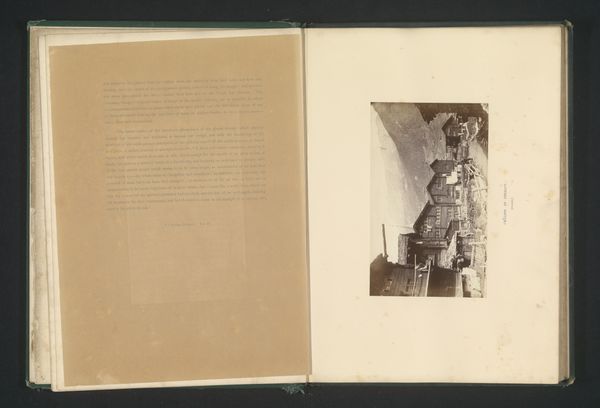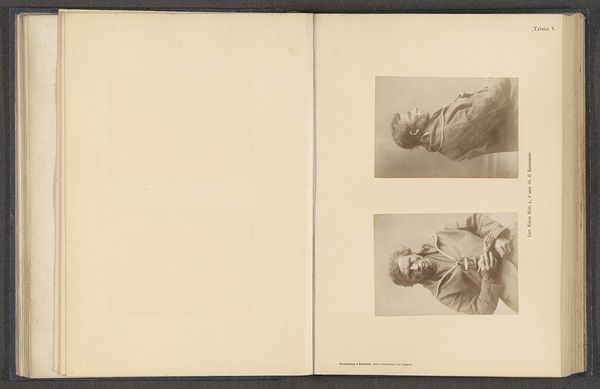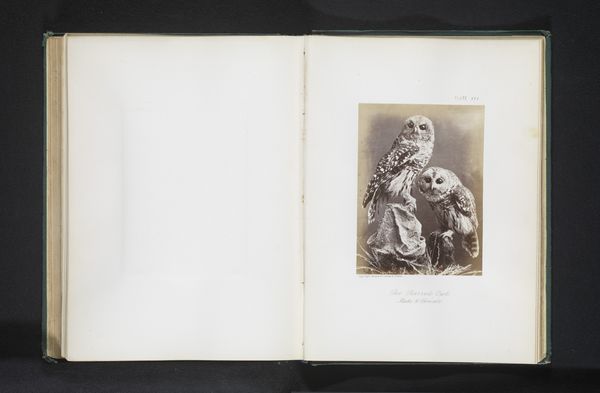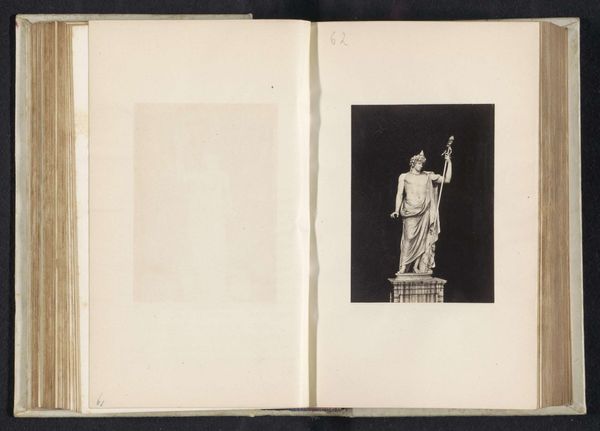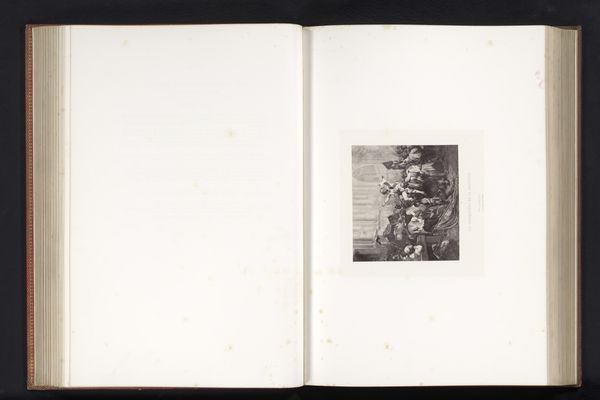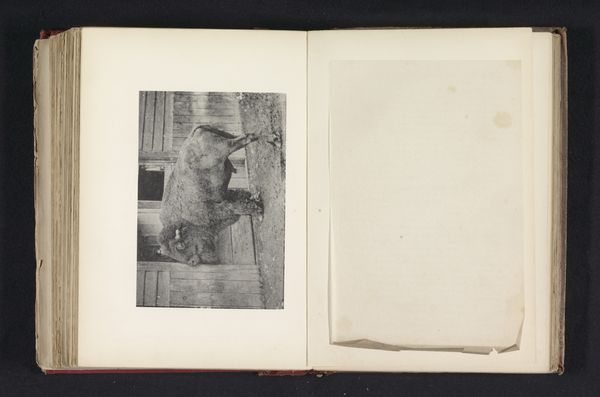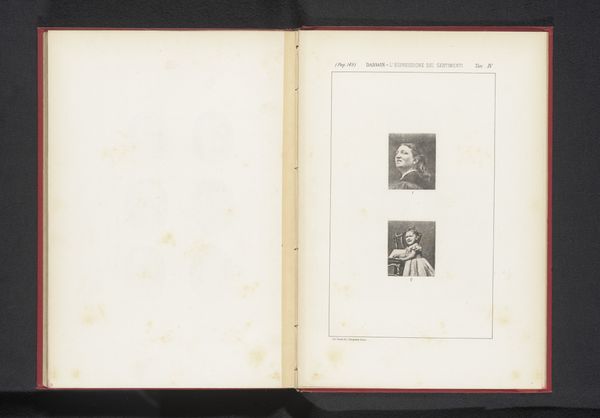
print, bronze, photography, sculpture, gelatin-silver-print
# print
#
bronze
#
figuration
#
photography
#
sculpture
#
gelatin-silver-print
#
watercolor
Dimensions: height 211 mm, width 90 mm
Copyright: Rijks Museum: Open Domain
Editor: Here we have a photograph of a bronze Etruscan angel, dating to 1879. The gelatin silver print captures a sculpture on a plinth. The angel has an interesting stance – upright with large, almost disproportionate wings. What strikes you most when you look at this image? Curator: Immediately, the image evokes a sense of cultural memory. Winged figures often serve as mediators between the human and divine. Considering the Etruscan context, can you think of similar iconographic traditions? Editor: Well, the wings definitely make me think of Greek gods like Hermes, but something about this feels more somber. Is that simply the patina of the bronze or something more intentional, perhaps related to Etruscan beliefs about the afterlife? Curator: Precisely! The Etruscans placed great emphasis on the afterlife. Notice the angel holds what appears to be a torch or small flame. That symbol, repeated throughout funerary art, may indicate guidance for the soul’s journey. Does the lighting and monochrome image help highlight the contrast of symbolic light against the unknown? Editor: I think it does. I’d almost expect vibrant color in Etruscan art. Here, it draws me into a contemplative space instead. And thinking of this angel’s "job description" as a soul guide is more moving to me than I expected. Curator: Yes, and that torch also speaks to cultural continuity. Even today, the torch is universally recognized as a symbol of enlightenment and hope, transcending millennia. It is a reminder that symbols resonate far beyond their initial context. Editor: I hadn't really thought of the angel as carrying a ‘message,’ but I’m struck by the thought that images carry a symbolic meaning beyond what the artist explicitly planned. Curator: Indeed. Studying the psychology and historical contexts behind this helps us decipher the ongoing resonance and importance of such imagery.
Comments
No comments
Be the first to comment and join the conversation on the ultimate creative platform.

